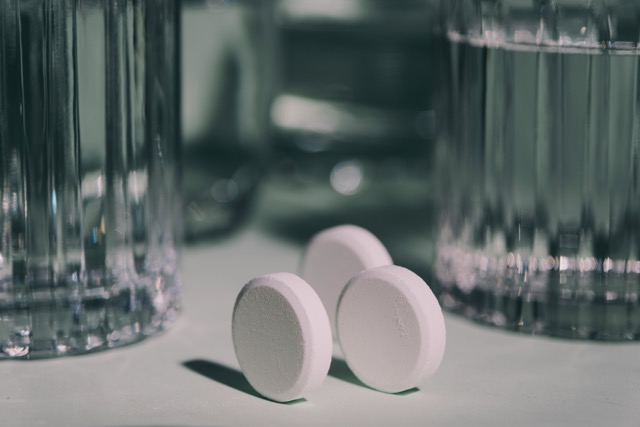Health span — more than just life expectancy
What factors determine health span, and how can we influence them?

For the first time in human history, people live to be around 80 years old on average. Thanks to a series of brilliant breakthroughs in the last century, early mortality is becoming increasingly rare and human lifespan is becoming ever longer.
However, many are afraid of aging because it brings illnesses and thus reduces the quality of life. In the not too distant future, however, this may no longer be the case. What if we could not only live longer, but also healthier lives longer?
Life span versus health span
Our lifespan is the number of years we live — from our birthday to the day we die. Health duration, on the other hand, is the number of years we have been in good health and free from chronic diseases. In Western Europe, for example, the average life expectancy is 80 years, while the average health expectancy is only 65 years. This means that we spend up to 20% of our lives in poor health. Bridging the ever-widening gap between these two figures is one of the priorities in longevity research — tackling aging with the aim of extending the health span.
Deciphering the health span
To understand where we stand within our health range, we need to assess how old our bodies really are. This is where the concept of biological age into the game.
Everyone has two ages — chronological age and biological age. The chronological age is the number that we celebrate on each birthday and over which we have no influence. Biological age, on the other hand, is easier to influence. It reflects our overall health status and changes in connection with lifestyle and general health.
By analyzing various aging indicators, we can decipher our true biological age. And we can extrapolate the remaining years of our life expectancy if we maintain our lifestyle.
Ageing indicators
Ageing indicators are well-researched foundations for why we age at the cellular level. They react measurably to aging and age-related diseases. These aging indicators are analyzed to develop algorithms that in turn calculate our biological age. They can be an excellent tool for early diagnosis of various age-related diseases, such as cancer, cardiovascular diseases, and neurological disorders.
One of the key indicators of aging that is most commonly used in determining biological age is epigenetic changes.
Epigenetics
Epigenetics Refers to a layer of molecules across our genome that regulates how a gene is expressed. Epigenetics is essentially responsible for increasing, reducing, or even deactivating the activity of a gene. Using chemical groups such as methyl (CH3), epigenetics alters gene expression without interfering with the genetic code.
While our genome is constant from birth, our epigenome is flexible and dynamic and is heavily influenced by our environment and lifestyle.
Epigenetic changes as an indicator of aging
With increasing age, our genetic material is damaged and subsequently repaired. These repairs are rarely perfect and often result in a different epigenetic form. These critical changes can aggravate the characteristics of old age and age-related diseases.
Epigenetic changes are an important basis and an indicator of aging. Analyzing epigenetic changes can help you build your true biological age and a personal profile of your health status. You can also use these variables to estimate your current health span.
Improving life expectancy
Biological age and health span show us that you can determine for yourself how and how quickly you age. A better lifestyle and a healthier environment not only slow down the aging process, but can even reverse it! That means you can stay healthier longer.
References
- Wu, J.W., Yaqub, A., Ma, Y., Koudstaal, W., Hofman, A., Ikram, M.A., Ghanbari, M. & Goudsmit, J. (2021). Biological age in healthy elderly predicts aging-related diseases including dementia. Scientific Reports, 11(1). https://doi.org/10.1038/s41598-021-95425-5
- Lopez-Otín, C., Blasco, M.A., Partridge, L., Serrano, M. & Krömer, G. (2013). The Hallmarks of Aging Cell, 153(6), 1194—1217. https://doi.org/10.1016/j.cell.2013.05.039
- Saul, D. & Kosinsky, R.L. (2021). Epigenetics of Aging and Aging Associated Diseases. International Journal of Molecular Sciences, 22(1) 401. https://doi.org/10.3390/ijms22010401
Publiziert
31.3.2025
Kategorie
Longevity

Experte
Scientific Terms
Epigenetics
From ancient Greek π epi 'to, moreover, 'and genetics
Refers to changes in a cell's gene expression that do not involve a change in the DNA code. Instead, the DNA and histones around which the DNA is wrapped are “marked” with removable chemical signals (see demethylation and deacetylation). Epigenetic tags tell other proteins where and when to read the DNA. This is comparable to a post-it on a book page that says “Skip.” A reader will ignore the page, but the book itself hasn't been changed.
Epigenetic clock
A type of DNA clock that relies on measuring natural DNA methylation levels to estimate the biological age of a tissue, cell type, or organ, such as the Horvath clock.
Gene Expression
A product that is based on a gene; may refer to either RNA or protein. When a gene is activated, cellular machines express it by transcribing the DNA into RNA and/or translating the RNA into a chain of amino acids. For example, a highly expressed gene makes many copies of RNA, and its protein product is likely to be abundant in the cell.
Biological Age
Biological age is the age of cells in the body, which is determined by various properties and biomarkers that correlate with aging and decay in research.
For the first time in human history, people live to be around 80 years old on average. Thanks to a series of brilliant breakthroughs in the last century, early mortality is becoming increasingly rare and human lifespan is becoming ever longer.
However, many are afraid of aging because it brings illnesses and thus reduces the quality of life. In the not too distant future, however, this may no longer be the case. What if we could not only live longer, but also healthier lives longer?
Life span versus health span
Our lifespan is the number of years we live — from our birthday to the day we die. Health duration, on the other hand, is the number of years we have been in good health and free from chronic diseases. In Western Europe, for example, the average life expectancy is 80 years, while the average health expectancy is only 65 years. This means that we spend up to 20% of our lives in poor health. Bridging the ever-widening gap between these two figures is one of the priorities in longevity research — tackling aging with the aim of extending the health span.
Deciphering the health span
To understand where we stand within our health range, we need to assess how old our bodies really are. This is where the concept of biological age into the game.
Everyone has two ages — chronological age and biological age. The chronological age is the number that we celebrate on each birthday and over which we have no influence. Biological age, on the other hand, is easier to influence. It reflects our overall health status and changes in connection with lifestyle and general health.
By analyzing various aging indicators, we can decipher our true biological age. And we can extrapolate the remaining years of our life expectancy if we maintain our lifestyle.
Ageing indicators
Ageing indicators are well-researched foundations for why we age at the cellular level. They react measurably to aging and age-related diseases. These aging indicators are analyzed to develop algorithms that in turn calculate our biological age. They can be an excellent tool for early diagnosis of various age-related diseases, such as cancer, cardiovascular diseases, and neurological disorders.
One of the key indicators of aging that is most commonly used in determining biological age is epigenetic changes.
Epigenetics
Epigenetics Refers to a layer of molecules across our genome that regulates how a gene is expressed. Epigenetics is essentially responsible for increasing, reducing, or even deactivating the activity of a gene. Using chemical groups such as methyl (CH3), epigenetics alters gene expression without interfering with the genetic code.
While our genome is constant from birth, our epigenome is flexible and dynamic and is heavily influenced by our environment and lifestyle.
Epigenetic changes as an indicator of aging
With increasing age, our genetic material is damaged and subsequently repaired. These repairs are rarely perfect and often result in a different epigenetic form. These critical changes can aggravate the characteristics of old age and age-related diseases.
Epigenetic changes are an important basis and an indicator of aging. Analyzing epigenetic changes can help you build your true biological age and a personal profile of your health status. You can also use these variables to estimate your current health span.
Improving life expectancy
Biological age and health span show us that you can determine for yourself how and how quickly you age. A better lifestyle and a healthier environment not only slow down the aging process, but can even reverse it! That means you can stay healthier longer.
Experte
Referenzen
- Wu, J.W., Yaqub, A., Ma, Y., Koudstaal, W., Hofman, A., Ikram, M.A., Ghanbari, M. & Goudsmit, J. (2021). Biological age in healthy elderly predicts aging-related diseases including dementia. Scientific Reports, 11(1). https://doi.org/10.1038/s41598-021-95425-5
- Lopez-Otín, C., Blasco, M.A., Partridge, L., Serrano, M. & Krömer, G. (2013). The Hallmarks of Aging Cell, 153(6), 1194—1217. https://doi.org/10.1016/j.cell.2013.05.039
- Saul, D. & Kosinsky, R.L. (2021). Epigenetics of Aging and Aging Associated Diseases. International Journal of Molecular Sciences, 22(1) 401. https://doi.org/10.3390/ijms22010401
Publiziert
31.3.2025
Kategorie
Longevity

Wissenschaftliche Begriffe
Epigenetics
From ancient Greek π epi 'to, moreover, 'and genetics
Refers to changes in a cell's gene expression that do not involve a change in the DNA code. Instead, the DNA and histones around which the DNA is wrapped are “marked” with removable chemical signals (see demethylation and deacetylation). Epigenetic tags tell other proteins where and when to read the DNA. This is comparable to a post-it on a book page that says “Skip.” A reader will ignore the page, but the book itself hasn't been changed.
Epigenetic clock
A type of DNA clock that relies on measuring natural DNA methylation levels to estimate the biological age of a tissue, cell type, or organ, such as the Horvath clock.
Gene Expression
A product that is based on a gene; may refer to either RNA or protein. When a gene is activated, cellular machines express it by transcribing the DNA into RNA and/or translating the RNA into a chain of amino acids. For example, a highly expressed gene makes many copies of RNA, and its protein product is likely to be abundant in the cell.
Biological Age
Biological age is the age of cells in the body, which is determined by various properties and biomarkers that correlate with aging and decay in research.
.svg)














